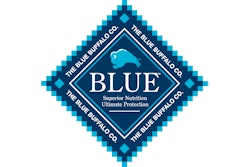
Purina and Blue Buffalo’s marketing strategies seem to have succeeded in communicating pet food brand value to customers, but one scientist found differences in pet owner reviews online. In his presentation at Petfood Forum CONNECT, that researcher discussed his analysis of consumer perceptions of two brands: Purina ONE SmartBlend and Blue Buffalo Life Protection formulas. Lonnie Hobbs, agricultural economics doctoral student at Kansas State University, gathered 5,837 online customer reviews and product descriptions for the two brands of pet food on Amazon, Chewy, Petco.com and Walmart.com. He considered the Purina product as the study’s brand.
To structure his study, Hobbs used the three-circle framework developed by Joel Urbany and James Davis and described in the Harvard Business Review. The three circles form a Venn diagram made up of these aspects of a pet food brand’s strategy:
1. Customer needs - Information that the customers actually demand or perceive as value from the products
2. Company's offerings - Information that the company is marketing to the customers as value
3. Competitors’ offerings - Competitors’ information and attributes marketed as value to the customers
Hobbs pointed out one section of the diagram where a company’s offerings overlapped with consumers’ demands, yet competitors’ do not.
“This is the company's primary point of differentiation, which allows the company to increase their competitive position within the market.
Analysis of Purina and Blue Buffalo online reviews
Using the three-circle framework, Hobbs conducted his research on consumer perceptions of pet food. For both Purina and Blue Buffalo, the majority of ratings on all four e-commerce sites, Amazon, Chewy, Petco.com and Walmart.com, were five stars, meaning positive. Amazon had the most reviews in total for Purina, but also the majority of negative reviews, which was nevertheless dwarfed by the number of positive reviews. Blue Buffalo reviews were most numerous on Chewy, while negative reviews of the brand were most common on Amazon. Likewise, positive reviews outnumbered the negative.
To make sense of these reviews, Hobbs’ team categorized the words used by pet food buyers. For example, when pet food buyers used any word that described an ingredient used in the product, the researchers tallied that word in the “ingredient” category. That classification grew to include 96 words, making up 26% of the total number of words analyzed.
Purina, Blue Buffalo or other pet food brand could make changes to their product or its marketing related to consumers’ terms found in the ingredient category. However, these alterations may result in consumers considering it a change in quality or function, he said. Brands could differentiate in the category by either physical or perceptual changes related to ingredients.
While positive reviews were most prevalent for both Purina and Blue Buffalo, reviews related to ingredients tended to be negative. Likewise, reviews using terms in the “packaging” category tended to be negative, but these often related to damaged bags and other shipping issues.
Reviewers also used many health-related words to describe their experiences with the pet foods. This category had the highest number of words in it, at 105. These health descriptors made up 28% of the total number of words analyzed.
In the three-circle framework, all of the attributes which the companies marketed as valuable to the customers, those pet food buyers actually perceived as value, he said. The framework also suggested that Purina does not have a point of differentiation in the eyes of the customers, as it relates to Purina ONE SmartBlend and Blue Buffalo Life Protection formulas. However, Blue Buffalo did have a point of differentiation, as it refers to the appearance, form and packaging of the product.
“This research, this framework and the results of this study help pet food companies to better align their marketing strategy with customer-desired attributes,” Hobbs said.

















